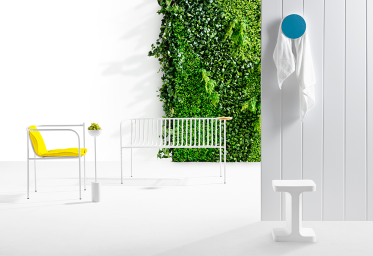
The original Eames Chair and Ottoman. Image courtesy Vitra.
You are probably wondering why the design world is so fixated on the virtues of an original versus the viral nature of the replica? Surely the knock-on effects of knock-off furniture can’t be all that bad… right? Well, not entirely. HouseLab takes a look at the authenticity debate to explain some basic implications for you, the consumer.
To get the fine print out of the way, what many of us don’t realise is Australia is one of the few countries in the world where it is actually legal to import and sell replica furniture. As long as the word ‘replica’ appears in front of the name, you can even sell a piece by its original name, often including the name of the designer. It is a loophole that has spawned an entire industry here – while in the UK, for example, this practice attracts enormous fines and even imprisonment.
Because of this gap in the legislation we are given the option to make a choice on the price and quality of the furniture we buy and mainstream/social media keeps our desire burning for ‘that chair’. It is fair to say the furniture and lighting we see in these magazines and blogs is expensive, out of reach for many and thus the cheaper alternative becomes appealing.
Democratising design was core to the career of Charles and Ray Eames, whose work epitomises ‘mid-century modern’ and is now commonly prefixed by the R word, though their iconic pieces came about through years of research and investment, with a little help from the US Army. Having spent over a decade experimenting with timber, they landed on a splint, made from moulded plywood, which was used during World War II. This ‘technology’ gave birth to what we now know as the Eames chair and subsequently moulded plywood furniture became something of a ‘thing’ globally.

Incredibly, even Australian designer’s work is replicated like Ross Gardam’s Oak Pendants. Photograph Haydn Cattach.
Indeed, the start-up careers of two of the most important figures in contemporary design were funded by the military, but so were inventions like the internet. These days designers work on royalties and often need to take on a second job, such as teaching, to continue their legacy of creativity.
When it comes to quality, though, replica furniture raises some bigger issues. In recent times, the imitation of a simple, yet iconic, metal stool resulted in more than one toe being cut off. The original considered this, with the legs being rolled back for safety. With lighting, many replicas breach Australian Standards with regards to the amount of weight that can be held by a cable or electrical compliance. Scary stuff. Really.

The original Tolix Chair-A as installed by FORMAFANTASMA at the FACE TO FACE WITH AN ICON exhibition celebrating 80 years of the chair. The original features curved legs.
Commonly, replica furniture pieces come without a warranty or after-sales service, not to mention being poorly made. It’s a dash for cash that leaves you in the lurch should anything go wrong and, given the corners cut in manufacturing, your newfound dream is destined to be short-lived.
So, there’s the other thing about this debate – is it worth it? Investing in a solid piece of furniture that is well-made and well-designed means you are not just supporting the design industry you admire, but also that you won’t have to go back and buy the same piece again in a year or two. There’s a hassle worth avoiding right there.
In short, yes – the design industry is frustrated by the lack of protection afforded to it by Australia’s copyright laws. You can find out more here, but it is more than design snobbery or showing how on trend you are – buying the real deal benefits everybody, every day.
The original Eames collection is available though Living Edge and you can view Ross Gardam's work here.
https://authenticdesignalliance.org/
WRITTEN BY HouseLab



